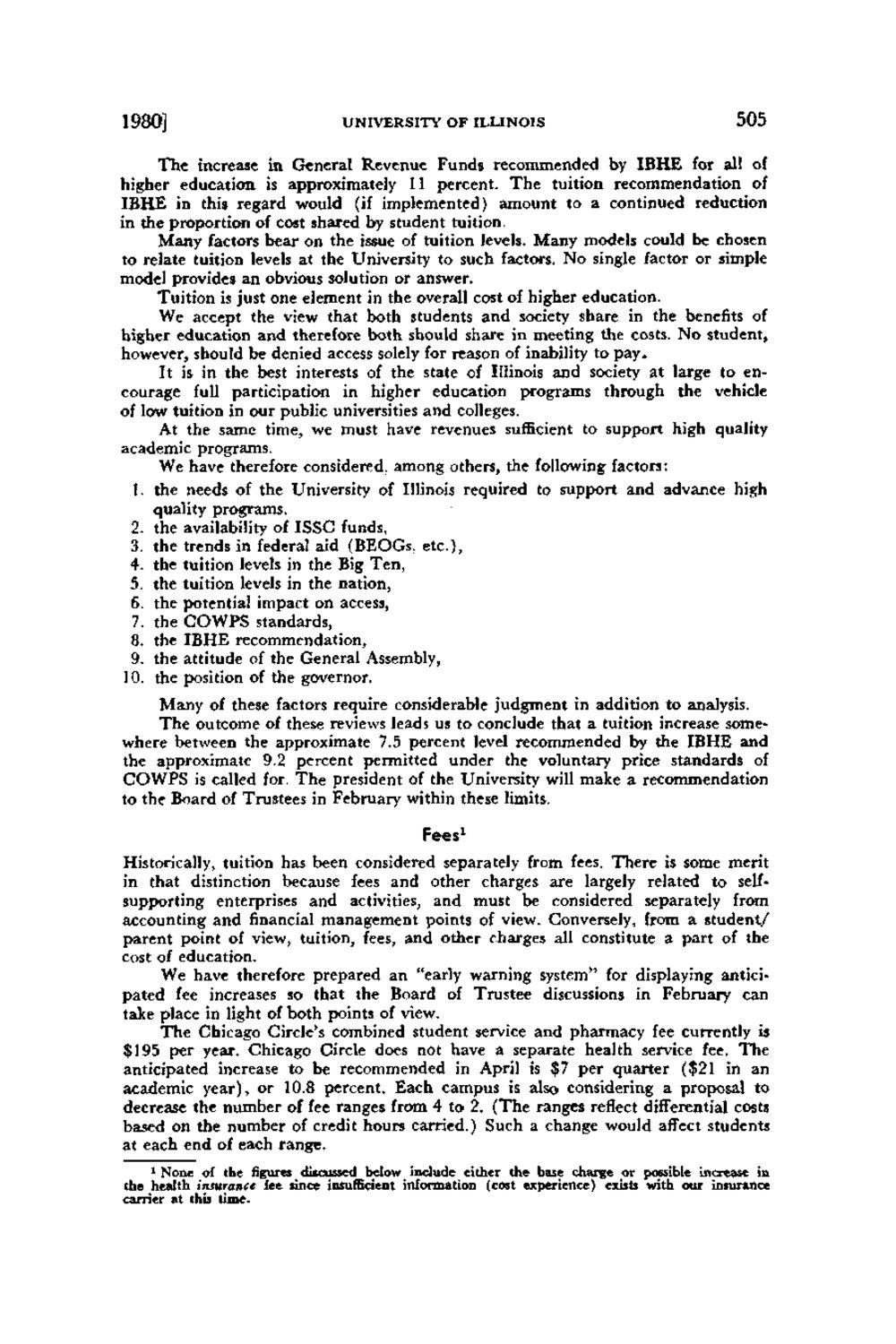| |
| |
Caption: Board of Trustees Minutes - 1980
This is a reduced-resolution page image for fast online browsing.

EXTRACTED TEXT FROM PAGE:
1980] UNIVERSITY OF ILLINOIS 505 The increase in General Revenue Funds recommended by IBHE for all of higher education is approximately 11 percent. T h e tuition recommendation of IBHE in this regard would (if implemented) amount to a continued reduction in the proportion of cost shared by student tuition. Many factors bear on the issue of tuition levels. Many models could be chosen to relate tuition levels at the University to such factors. No single factor or simple model provides an obvious solution or answer. Tuition is just one element in the overall cost of higher education. We accept the view that both students and society share in the benefits of higher education and therefore both should share in meeting the costs. No student, however, should be denied access solely for reason of inability to pay. It is in the best interests of the state of Illinois and society at large to encourage full participation in higher education programs through the vehicle of low tuition in our public universities and colleges. At the same time, we must have revenues sufficient to support high quality academic programs. We have therefore considered, among others, the following factors: 1. the needs of the University of Illinois required to support and advance high quality programs, 2. the availability of ISSC funds, 3. the trends in federal aid (BEOGs, etc.), 4. the tuition levels in the Big Ten, 5. the tuition levels in the nation, 6. the potential impact on access, 7. the COWPS standards, 8. the IBHE recommendation, 9. the attitude of the General Assembly, 10. the position of the governor. Many of these factors require considerable judgment in addition to analysis. The outcome of these reviews leads us to conclude that a tuition increase somewhere between the approximate 7.5 percent level recommended by the IBHE and the approximate 9.2 percent permitted under the voluntary price standards of COWPS is called for. The president of the University will make a recommendation to the Board of Trustees in February within these limits. Fees1 Historically, tuition has been considered separately from fees. There is some merit in that distinction because fees and other charges are largely related to selfsupporting enterprises and activities, and must be considered separately from accounting and financial management points of view. Conversely, from a student/ parent point of view, tuition, fees, and other charges all constitute a part of the cost of education. We have therefore prepared an "early warning system" for displaying anticipated fee increases so that the Board of Trustee discussions in February can take place in light of both points of view. The Chicago Circle's combined student service and pharmacy fee currently is $195 per year. Chicago Circle does not have a separate health service fee. The anticipated increase to be recommended in April is $7 per quarter ($21 in an academic year), or 10.8 percent. Each campus is also considering a proposal to decrease the number of fee ranges from 4 to 2. (The ranges reflect differential costs based on the number of credit hours carried.) Such a change would affect students at each end of each range. 1 None of the figures discussed below ^ include cither the base charge or passible increase in the health insurance fee since insufficient information (cost experience) exists with our insurance carrier at this time.
| |